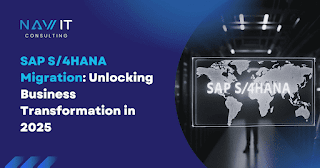What is the difference between SAP S-4HANA and SAP ERP?
The primary difference between SAP S/4HANA and SAP ERP lies in their architecture, performance, and overall capabilities. SAP S/4HANA is the next generation of SAP ERP solutions, designed to leverage the in-memory computing capabilities of SAP HANA for faster processing, simplified data models, and a modern user experience. Here’s a breakdown of their key differences:
1. Technology and Performance
SAP ERP: The traditional SAP ERP (also known as SAP ECC) uses older database technologies and relies on relational databases, which can be slower when dealing with large amounts of data. While reliable, it’s not optimized for real-time processing or handling vast datasets efficiently.
SAP S/4HANA: S/4HANA is built on SAP HANA, an in-memory database that allows data to be processed in real-time. This drastically improves the speed of operations, reporting, and decision-making. In-memory computing removes the need for separate data warehouses or batch processes, making S/4HANA much faster than SAP ERP.
2. User Experience
SAP ERP: The user interface of SAP ERP is more traditional and can be quite complex for new users. While functional, the experience can feel outdated compared to more modern systems.
SAP S/4HANA: S/4HANA provides a modern, intuitive user interface based on SAP Fiori, which is more user-friendly, visually appealing, and easier to navigate. It is designed for mobile use as well, making it more adaptable across different devices.
3. Data Model
SAP ERP: SAP ERP uses a complex and fragmented data model with multiple systems and layers. This structure can lead to inefficiencies and slower processing, as data often needs to be aggregated from different sources.
SAP S/4HANA: The data model in S/4HANA is simplified, reducing redundancies and offering a more streamlined approach to data management. This allows for better performance and more accurate real-time insights.
4. Deployment Options
SAP ERP: Typically, SAP ERP is deployed on-premise, which means companies need to manage their own infrastructure, including servers and databases.
SAP S/4HANA: S/4HANA offers more flexibility, supporting both on-premise and cloud deployments. This means businesses can choose the most appropriate infrastructure for their needs, whether it’s on their own servers or hosted in the cloud.
5. Real-Time Data Processing
SAP ERP: Due to its older technology, SAP ERP processes data in batches, which can result in delays in reporting and decision-making. Businesses might need to wait for data to be processed before gaining insights.
SAP S/4HANA: One of the standout features of S/4HANA is its ability to process data in real-time, thanks to the in-memory computing capabilities of SAP HANA. This means faster access to analytics, reporting, and data-driven insights.
6. Cost of Ownership
SAP ERP: The cost of ownership for SAP ERP can be higher due to the need for complex infrastructure, customization, and maintenance. As the system is based on older technology, upgrades and system changes can be costly and time-consuming.
SAP S/4HANA: While the initial investment for S/4HANA can be higher, it offers lower long-term maintenance costs. Its simplified architecture reduces the complexity of system updates and maintenance, and its real-time data processing and cloud compatibility can reduce infrastructure and operational costs over time.
7. Customization and Flexibility
SAP ERP: SAP ERP offers significant customization options, making it suitable for businesses with very specific requirements. However, these customizations often lead to higher implementation and maintenance costs.
SAP S/4HANA: S/4HANA offers flexibility through its modular structure, but with a simpler data model, it reduces the need for excessive customization. As businesses grow, they can more easily scale and adapt to new processes without the heavy customization required by traditional ERP systems.
Conclusion
In essence, SAP S/4HANA represents a modern, streamlined version of SAP ERP, offering superior performance, a more intuitive user interface, real-time data processing, and better flexibility. However, businesses that are already using SAP ERP and have extensive customizations may need to carefully plan their transition to SAP S/4HANA to ensure a smooth migration.
If you’re starting fresh or looking for a future-proof ERP solution, SAP S/4HANA is likely the best choice, as it supports emerging technologies, cloud solutions, and real-time analytics. On the other hand, companies with a well-established SAP ERP system may continue using it for the foreseeable future, though it may become more challenging to keep up with technological advancements.


Comments
Post a Comment